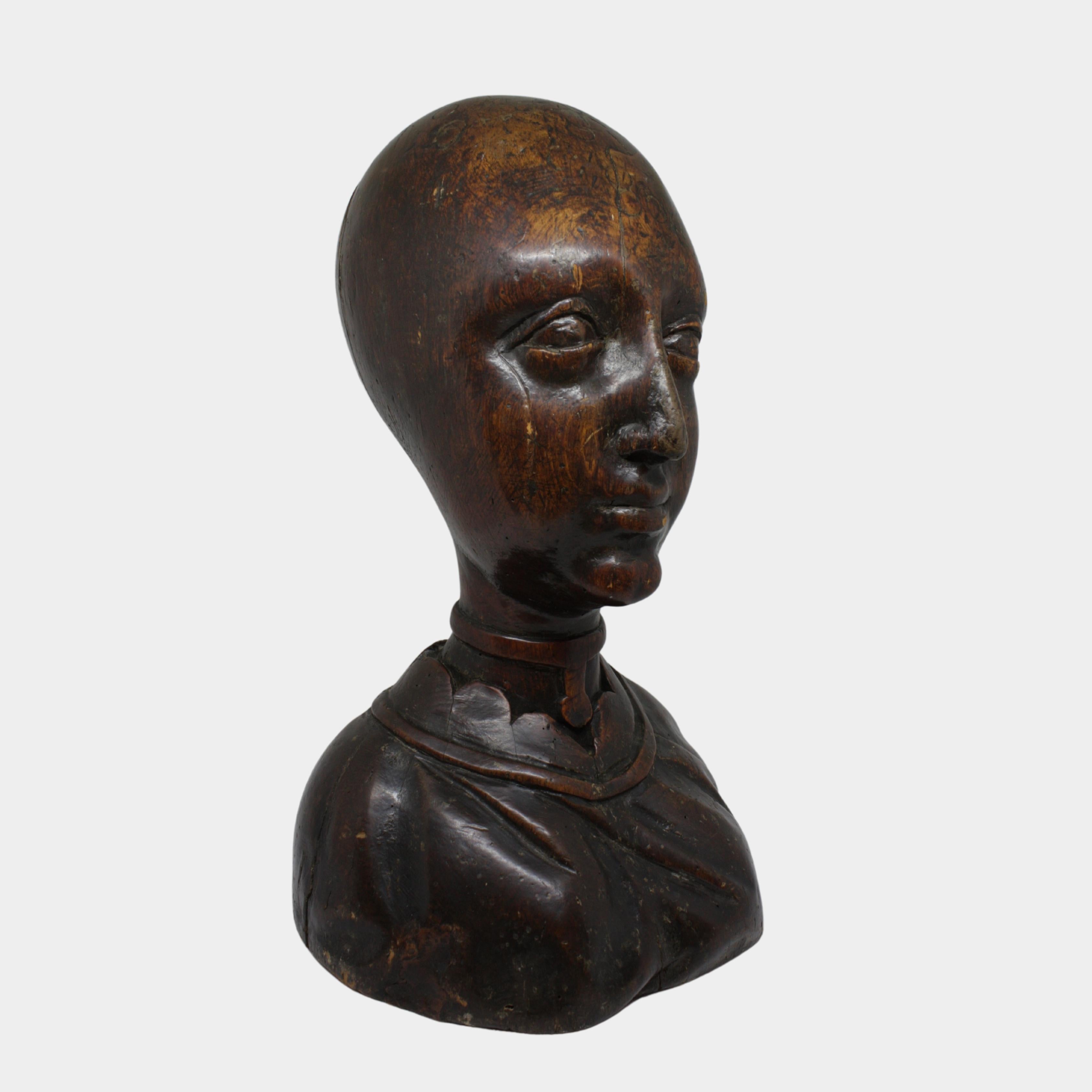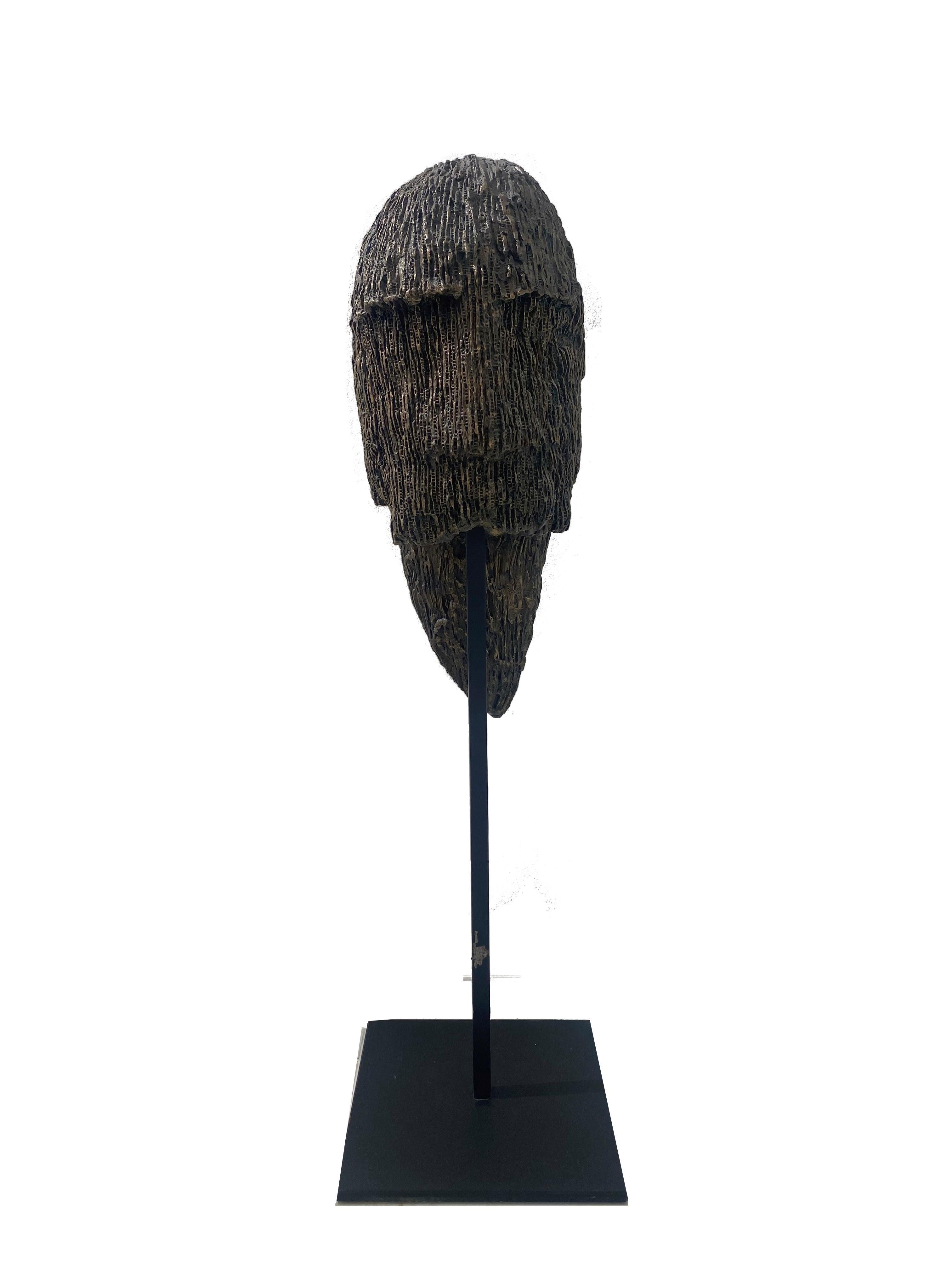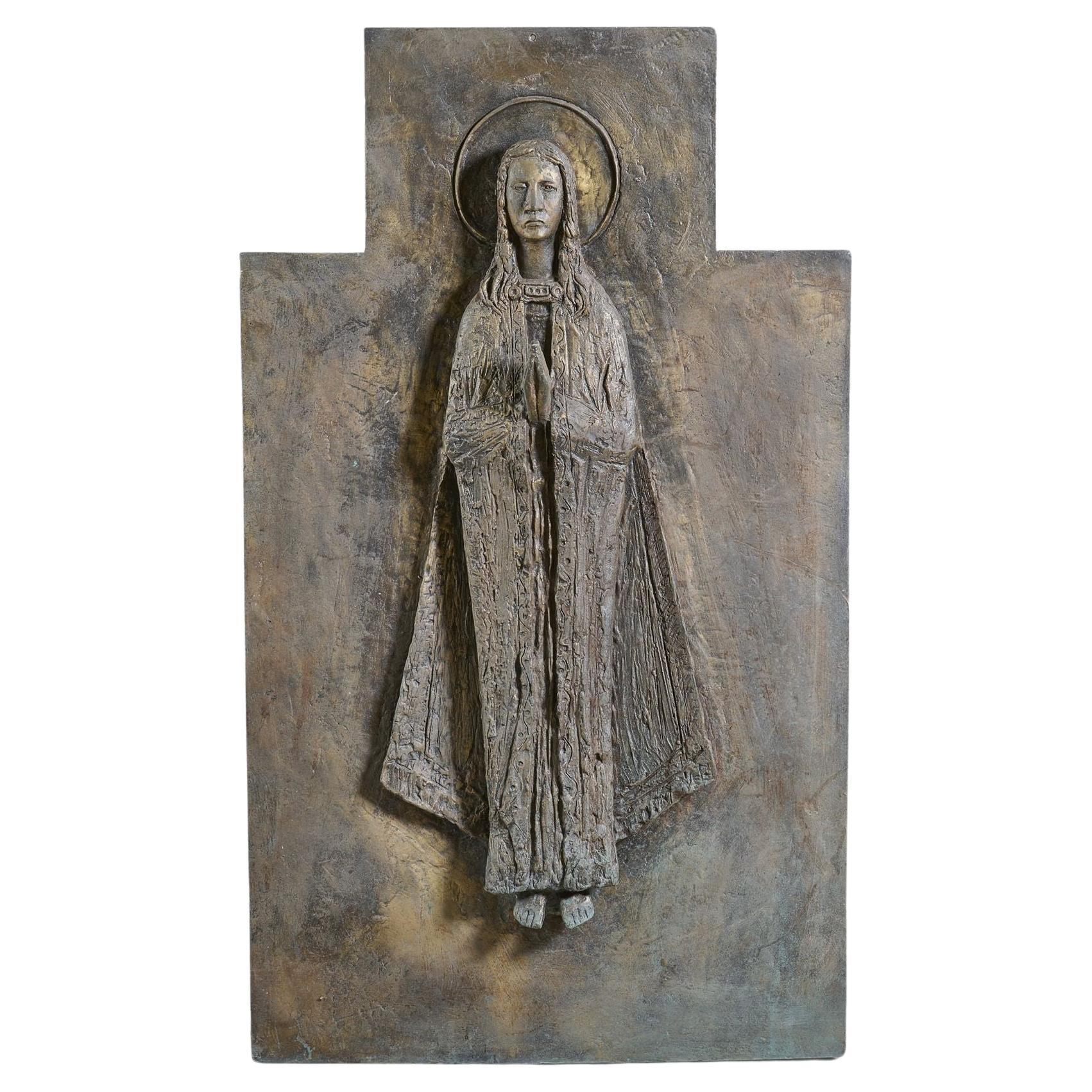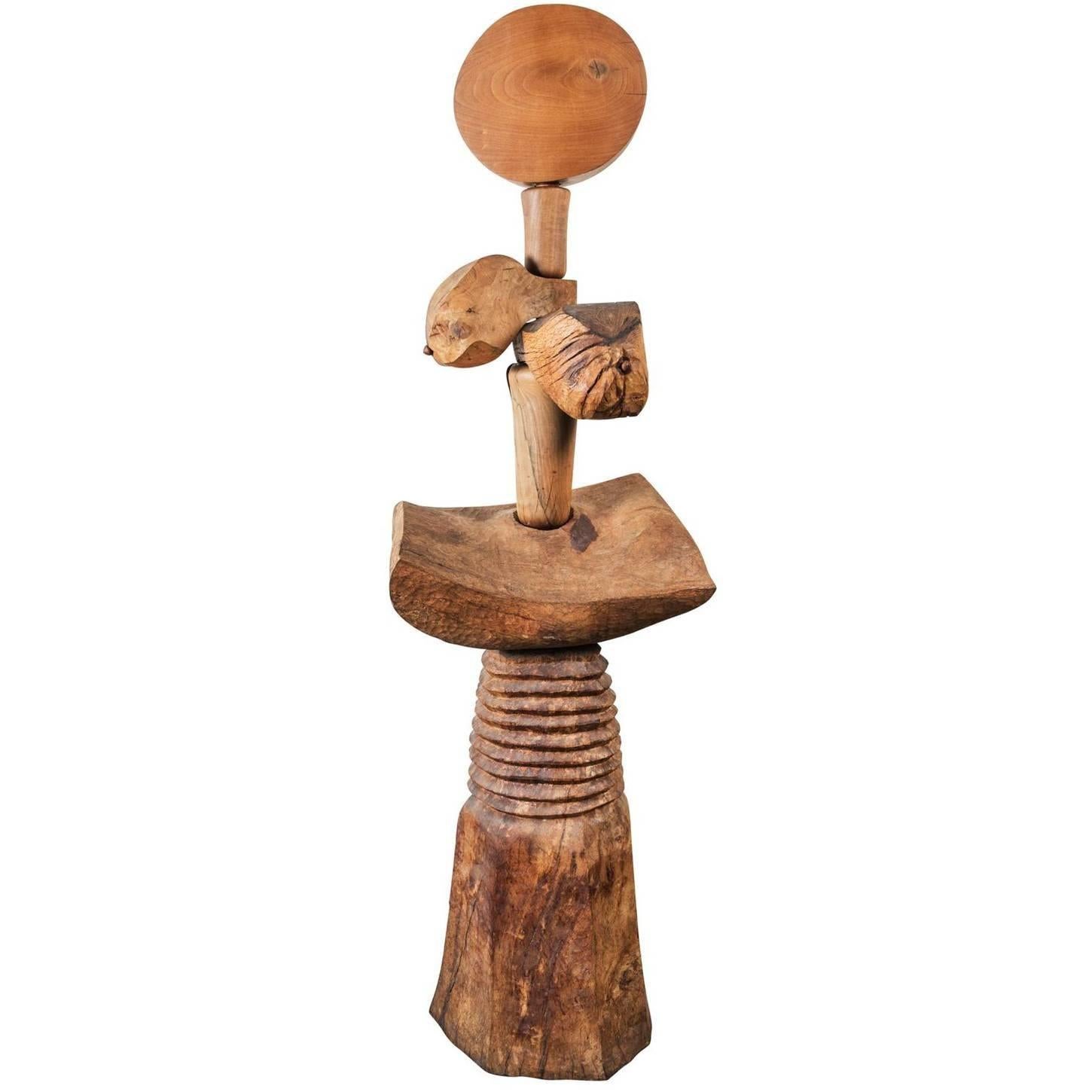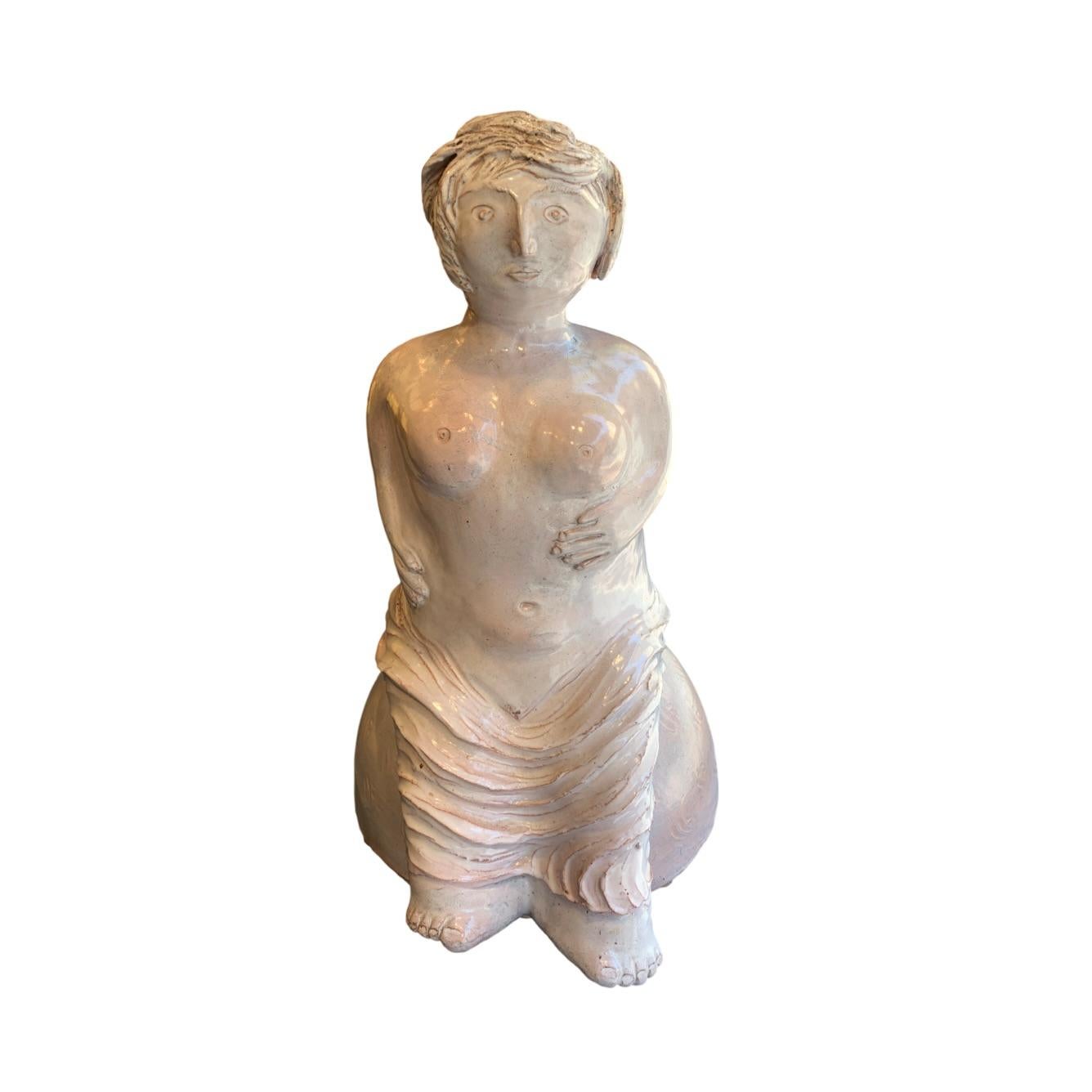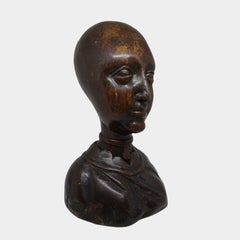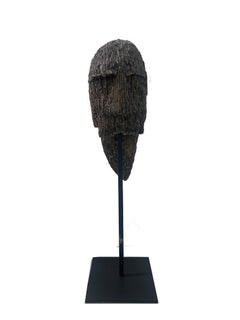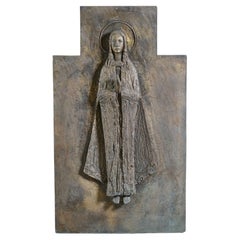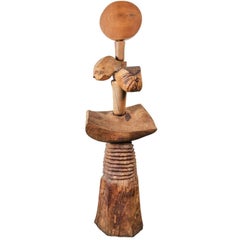Want more images or videos?
Request additional images or videos from the seller
1 of 5
UnknownHELMET HEADXIII/XIV CENTURY
XIII/XIV CENTURY
$8,317.74
£6,183.28
€7,000
CA$11,441.47
A$12,747.50
CHF 6,723.07
MX$154,542.82
NOK 85,527.19
SEK 79,673.99
DKK 53,329.21
About the Item
Very rare wooden helmet-bearing head, datable between the 13th and 14th centuries, extraordinary evidence of medieval material culture. This object, carved with essential and primitive lines, was used to support parade or combat helmets, protecting their shape and integrity.
The work measures 22 cm in height and is made of antique wood, which has a wonderful patina of time and natural wear consistent with centuries gone by. The head is characterized by stylized features: almond-shaped engraved eyes, prominent nose, and barely noticeable mouth, typical of Romanesque aesthetics and an archaic and powerful artistic language.
A rare and striking object, perfect for medieval art collectors, museums or ancient history enthusiasts who wish to enrich their spaces with an authentic and fascinating artifact.
📌 An intact fragment of the Middle Ages, a unique piece that tells centuries of history.
- Creation Year:XIII/XIV CENTURY
- Dimensions:Height: 8.67 in (22 cm)Width: 5.91 in (15 cm)Depth: 5.91 in (15 cm)
- Medium:
- Period:
- Condition:
- Gallery Location:Milano, IT
- Reference Number:1stDibs: LU2802216046362
About the Seller
No Reviews Yet
Vetted Professional Seller
Every seller passes strict standards for authenticity and reliability
Established in 1966
1stDibs seller since 2024
- ShippingRetrieving quote...Shipping from: Milano, Italy
- Return Policy
Authenticity Guarantee
In the unlikely event there’s an issue with an item’s authenticity, contact us within 1 year for a full refund. DetailsMoney-Back Guarantee
If your item is not as described, is damaged in transit, or does not arrive, contact us within 7 days for a full refund. Details24-Hour Cancellation
You have a 24-hour grace period in which to reconsider your purchase, with no questions asked.Vetted Professional Sellers
Our world-class sellers must adhere to strict standards for service and quality, maintaining the integrity of our listings.Price-Match Guarantee
If you find that a seller listed the same item for a lower price elsewhere, we’ll match it.Trusted Global Delivery
Our best-in-class carrier network provides specialized shipping options worldwide, including custom delivery.More From This Seller
View AllFEMALE BUST
Located in Milano, IT
Rare and fascinating carved wooden female bust, probably used as a wig holder. The work, made in Holland in the first half of the 17th century, features an elegant stylization of fac...
Category
17th Century Figurative Sculptures
Materials
Wood
LARGE MARBLE SKULL
Located in Milano, IT
Evocative and rare 17th-century carved marble skull from Lombardy, Italy. The work bears an engraved inscription on the back that reads "Carestia grandissima II2 LVIO 1630," a clear ...
Category
17th Century Figurative Sculptures
Materials
Marble
HEAD - STUCCO AND WAX ANATOMICAL MODEL
Located in Milano, IT
Rare anatomical head made of stucco and wax, of 18th-century German workmanship. Fascinating study model used in academia at the time, a fascinating piece of scientific art.
The piec...
Category
18th Century Figurative Sculptures
Materials
Chalk, Wax
SACRISTY DOOR
Located in Milano, IT
Antique Sacristy Door with Skull and Crossbones - Italy, 17th Century
Exceptional wooden vestry door, dating from the 17th century, from Italy. This unique piece was originally used...
Category
17th Century Italian School Figurative Sculptures
Materials
Wood Panel
FIGURE OF A CHILD - Sculpture ligneous
Located in Milano, IT
Elegant 15th-century wooden sculpture of a finely executed infant missing his arms. The work, of central Italian provenance, recalls the Donatello manner in the delicacy of the featu...
Category
15th Century and Earlier Italian School Nude Sculptures
Materials
Wood
Old Skeleton Puppet
Located in Milano, IT
Fascinating and rare wooden puppet depicting a skeleton, dating from the 19th century and probably of European origin. This piece hand-carved with extraordinary attention to anatomic...
Category
19th Century Figurative Sculptures
Materials
Wood
You May Also Like
Tête Rayée
Located in Porto, 13
The sculpture titled "Tête Raisée" by French artist Jacques Soulard is a striking work in bronze that presents a textured head mounted on a slender vertical support, which is affixed...
Category
2010s Contemporary Sculptures
Materials
Bronze
Important Sculpture
Located in ROUEN, FR
"Important Sculpture
IMPORTANT SCULPTURE representing Saint Floran de Lorch in polychrome wood in its beautiful old polychromy. He is represented ...
Category
16th Century Figurative Sculptures
Materials
Wood
$8,018
Sculture
Located in Round Top, TX
Mid-century cast bronze sculpture of Mary.
Category
Vintage 1960s Italian Figurative Sculptures
Materials
Metal, Bronze
$2,800
Life-Sized, Abstract Figurative Sculpture
Located in Los Angeles, CA
Remarkable, large, hand-carved, tribal-type, teak sculpture of an abstract, female form featuring a mix of refined and rough finishes.
Category
1920s Figurative Sculptures
Materials
Wood
Sculpture
Located in PARIS, FR
Sublime sculpture by French ceramic brothers Robert and Jean Cloutier
Category
20th Century Modern Nude Sculptures
Materials
Ceramic
Sculpture
Located in PARIS, FR
Sublime sculpture by French ceramic brothers Robert and Jean Cloutier
Category
20th Century Modern Nude Sculptures
Materials
Ceramic
More Ways To Browse
Testa Di
Katherine Choy
Kathleen Friedenberg Bronze Horse Sculptures
Kaws Elmo
Keith Christie Western Bronze Sculpture
Kevin Champeny
Kunst Met Een R
Lalanne Mouton
Last Supper Bas Relief
Laurence Le Constant Skulls
Laurence Le Constant
Lincoln Dalivision Silver
Louis Bancel
Louis De Guzman
M L Snowden
Magda Gluszek
Mark Chatterley
Martin Duque
